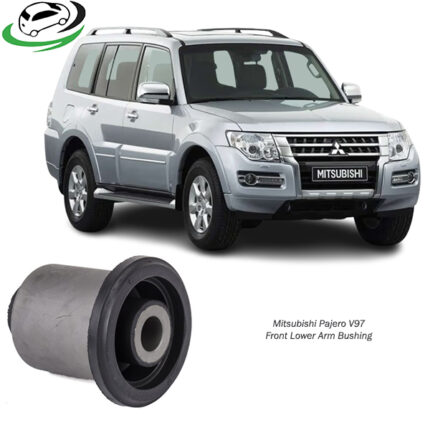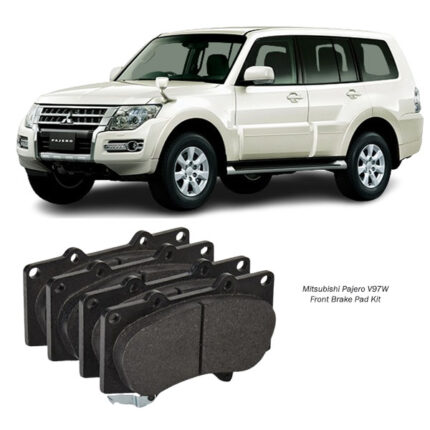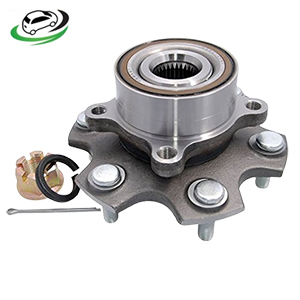Get Mitsubishi Pajero V87W Front Wheel Hub Bearing in Kenya
The Front Wheel Hub is a vital component in the suspension and steering systems of a vehicle. Its primary function is to serve as the central connection point for the wheel and tire assembly while enabling smooth rotation and bearing the vertical and lateral forces exerted during vehicle operation. Located at the front axle, the front wheel hub not only facilitates movement but also plays a key role in maintaining stability, alignment, and safety. It is especially important in front-wheel-drive and all-wheel-drive configurations, where it often interacts with other drivetrain components such as CV axles and brake assemblies.
Primary Function
At its core, the front wheel hub performs three main tasks:
-
Wheel Support and Rotation: It acts as the mounting point for the wheel, allowing it to rotate freely while maintaining its structural integrity and position.
-
Load Bearing: It supports the weight of the vehicle as well as additional forces encountered during acceleration, braking, and turning.
-
Integration with Braking and Steering Systems: The hub supports brake rotors or drums and often houses sensors or mounting brackets for ABS and traction control systems. In steering-equipped axles, it is also subjected to dynamic directional forces.
Design and Construction
A typical front wheel hub assembly consists of several integrated or cooperating parts, each engineered for durability and performance:
-
Hub Flange: This is the flat, circular plate to which the wheel and brake rotor or drum attach. It features bolt holes (studs or splines) for wheel lug nuts.
-
Bearing Unit: Housed within or integrated into the hub, this includes the inner and outer races, rolling elements (balls or tapered rollers), and a cage to maintain separation between rollers.
-
Seals: Used to prevent dirt, debris, and moisture from entering the bearing cavity and to retain grease.
-
Mounting Face/Knuckle Connection: The rear side of the hub connects to the steering knuckle or suspension arm, often with bolts or a press-fit design.
-
ABS/Speed Sensor Ring (in modern hubs): Some front hubs incorporate a tone ring or magnetic encoder to provide real-time data to the ABS or traction control systems.
Front hubs may come as a standalone unit or as part of a hub-and-bearing assembly, which is a sealed, pre-lubricated, and maintenance-free component.
Types of Front Wheel Hubs
Depending on vehicle architecture and engineering approach, several types of front wheel hubs exist:
-
Serviceable Hub with Separate Bearing: Traditional design where the bearing is installed into the knuckle, and the hub is fitted through it. Requires press-fit installation.
-
Sealed Hub and Bearing Assembly (Gen 1, 2, or 3): Integrated design where the hub and bearing come as a single unit, simplifying installation and reducing the likelihood of contamination.
-
Drive Hub (with Spline): Found in front-wheel and all-wheel-drive vehicles. These hubs have internal splines that mate with the CV axle shaft.
-
Non-Drive Hub: In vehicles where the front wheels do not drive the vehicle, the hub does not require splines and is primarily focused on rotation and load-bearing.
Material and Engineering
The front wheel hub is designed to withstand high stress, rotational forces, and extreme environmental conditions. Common materials include:
-
Forged or Cast Steel: Offers strength and impact resistance.
-
Chromium Alloy Bearings: Provide durability and resistance to fatigue.
-
High-Density Rubber or Synthetic Seals: Keep grease in and contaminants out.
-
Electromagnetic or Magnetized Steel: In sensor-integrated hubs for ABS systems.
Precision machining ensures tight tolerances for smooth fitment and minimal rotational resistance, critical for efficiency and safety.
Performance and Benefits
A quality front wheel hub ensures optimal driving performance and contributes to:
-
Smooth Rotation: Allows the wheel to rotate with minimal friction and noise.
-
Stable Handling: Maintains consistent wheel alignment and geometry, especially during turns and over uneven terrain.
-
Efficient Braking: Serves as a mounting surface for rotors and helps maintain alignment between the wheel and braking system.
-
Reduced Wear: Helps prevent uneven tire wear and strain on suspension components.
-
Noise and Vibration Isolation: A properly functioning hub absorbs vibration and road noise, contributing to ride comfort.
Installation Considerations
Proper installation of a front wheel hub is crucial for its performance and lifespan. Key installation steps include:
-
Surface Cleaning: Ensure all mating surfaces (hub, knuckle, rotor) are free of rust, dirt, or debris.
-
Correct Torque Application: Fasteners must be torqued to manufacturer specifications to avoid bearing preload issues or structural failures.
-
Sensor Alignment: In sensor-equipped hubs, ensure proper alignment and functionality of ABS or traction control sensors.
-
Press-Fit Handling: If the bearing and hub are separate, use a hydraulic press for safe and accurate installation without damaging components.
Professional installation is advised, particularly for integrated assemblies where incorrect handling may lead to premature failure.
Signs of Wear or Failure
Timely identification of a worn or failing front wheel hub can prevent further mechanical issues or accidents. Common symptoms include:
-
Grinding or Humming Noise: Particularly noticeable at speed or while turning.
-
Excessive Vibration: Steering wheel vibration or wobbling under braking or acceleration.
-
Uneven Tire Wear: Caused by play in the hub affecting alignment.
-
ABS Light Illumination: Faulty sensor or signal ring can trigger a dashboard warning.
-
Loose or Wobbly Wheel: Can indicate internal bearing failure or wear in the hub mounting points.
Failure to address these symptoms may lead to compromised braking, steering, or even wheel separation in extreme cases.
Maintenance and Lifespan
Modern front wheel hub assemblies are sealed and maintenance-free, pre-lubricated and designed for extended service life. The average lifespan ranges between 100,000 and 160,000 kilometers, though it can vary based on:
-
Driving conditions (off-road, urban, highway)
-
Load and vehicle weight
-
Climate and exposure to moisture or road salts
-
Quality of the component
Periodic inspections during tire rotations or brake servicing can help detect early signs of wear or damage.
Safety and Handling Implications
The front wheel hub directly affects critical safety systems such as:
-
Braking – Misalignment or bearing failure can impair rotor positioning and braking force.
-
Steering – A worn hub may create steering play or drift.
-
Stability Control Systems – Sensor-integrated hubs provide real-time data for ABS and traction systems. Faulty readings can compromise system response.
Maintaining a functional front wheel hub ensures not only smooth operation but safe driving dynamics, especially under emergency maneuvers or adverse conditions.
Follow us on Facebook for more parts.



